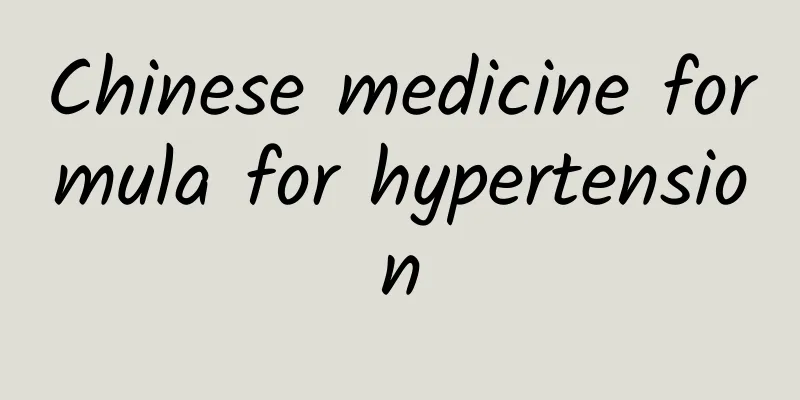The efficacy and function of Akebia trifoliata

|
There are so many medicinal herbs in the world, and it is inevitable that there are some that we are not familiar with. But as long as we have the spirit of learning throughout our lives, I believe we can slowly learn more medical herbs. So do you know about the medicinal herb Ziketong? [Other names] Golden silk Akebia, Slippery leaf Akebia, Big blood fly [Source] Medicinal material source: the whole herb of Clematis chinensis, a plant of the Ranunculaceae family. [Original form] Clematis smilax, essentially a vine. The stem is thick, cylindrical, glabrous, and has longitudinal stripes. Leaves opposite, simple; petiole 3.5-6cm long, strong, often curled; leaf blade thick leathery, broadly ovate, or cordate, 10-16cm long, 6.5-13cm wide, apex obtuse or blunt, base peltate-cordate, glabrous on both sides, entire, sometimes with shallow undulate denticulates, 5-7 basal veins, slightly raised above, significantly raised below, lateral veins inconspicuous. The panicles are axillary, 15-26cm long, with sparse flowers, each flower alternately 4-5cm on the inflorescence axis, and the pedicels are 4-5cm long and densely rusty hairs; bracts and bracteoles are narrowly obovate or linear; flowers are bisexual, densely rusty hairs in diameter; bracts and bracteoles are narrowly ovate or linear; flowers are bisexual, 3cm in diameter; sepals are 4-5, oblong or narrowly obovate, about 1.6cm long, 5-7mm wide, blue-purple, curled after flowering, densely rusty hairs on the outside, glabrous on the inside; petals absent; stamens numerous, the outer whorl is nearly equal in length to the sepals, the inner whorl is shorter, filaments linear, glabrous, connectives are elongated, about 2mm long; carpels numerous, hairy. Achenes narrowly ovate, about 6mm long, with yellow short soft hairs, persistent style feathery, 5-8cm long. The flowering period is from November to December, and the fruiting period is from December to January of the following year. [Habitat distribution] Ecological environment: Growing on hillsides, ditches or forests at an altitude of 500-2300m, climbing on tree branches. [Properties] Identification of properties: the stems are relatively long, twined or cut into segments, cylindrical, with a diameter of 0.5-1cm. Simple leaves are opposite, with petioles 3-6cm long, often twisted; leaves are mostly broken, complete leaves are cordate, 10-16cm long, 6-13cm wide, obtuse at the apex, shallowly cordate at the base, entire or with shallow teeth, green or dry green, with 5-7 basal veins visible; thick leathery. Sometimes axillary inflorescences are seen, densely covered with rusty hairs. It has a faint smell and a slightly bitter and spicy taste. 【Nature and flavor】 Bitter; pungent; slightly warm 【Functions and indications】 Relaxes muscles and tendons; promotes diuresis and relieves stranguria; dispels wind and relieves exterior symptoms. It is used to treat rheumatoid arthritis, back and leg pain, stranguria, and cold. [Usage and Dosage] For oral use: decoct in water, 9-15g; or soak in wine. 【Excerpt】 Chinese Materia Medica The above is an introduction to the Chinese medicinal material Akebia trifoliata. For medicinal herbs that we don't understand, we should learn more about them so that we can make full use of them in our lives and not be at a loss. |
<<: The efficacy and function of purple nanmu leaves
>>: The efficacy and function of crape myrtle
Recommend
Are green beans not allowed at dinner parties? Beware: Eating this vegetable undercooked can cause poisoning
"Baba Banquet" is a kind of open-air ba...
What kind of fish are the dried fish sold in supermarkets for one yuan a bag made of? Is it safe to eat?
Expert of this article: Pa Lize, chief physician ...
How to eat Tongcao
There are abundant food ingredients around us. Re...
The efficacy and function of red knotweed
For Chinese medicinal materials such as red knotw...
The efficacy and function of water hanxin grass
The essence of traditional Chinese medicine is to...
Why does Chang'e-5 adopt a "relay" method for sample return?
By December 2021, the Chang'e-5 sample return...
Why does your appearance improve so quickly after you put on sunglasses?
Follow "Body Code Decoding Bureau" (pub...
The efficacy and function of sea powder
As people's living standards improve, they pa...
Let’s not lie, Chang’e 5’s foothold on the moon is mainly due to bees
On November 24, 2020, the much-anticipated Chang&...
Chicken's gizzard lining plus walnuts for treating kidney stones
Walnuts contain a large amount of substances such...
What are the medicinal values of kapok bark?
Kapok is not ordinary cotton. It is a tree called...
The efficacy and function of Liangwang Tea
As for Liang Wang Tea, I think some people may ha...
The efficacy and function of long-stem orchid
Long-stem orchid is a kind of traditional Chinese...
Zhurong has traveled over 1,000 meters! 1 year and 1 month on Mars, 100 days on land
Today (August 23, 2021) marks one year and one mo...
This "smallest organ in the human body" cannot be ignored when injured!
《Cotton Swab Medical Science Popularization》 Xia ...









